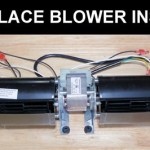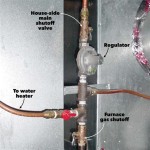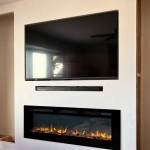Mount TV Fireplace Brick: A Comprehensive Guide
Integrating a television above a fireplace constructed of brick presents a unique blend of aesthetic appeal and functional design considerations. The combination offers a focal point for living spaces, merging entertainment and warmth. However, successfully mounting a television on a brick fireplace requires careful planning, proper execution, and an understanding of the materials involved. This article details the key aspects of this project, exploring the appropriate techniques, essential tools, and safety measures necessary for a secure and aesthetically pleasing installation.
Understanding the Challenges of Mounting on Brick
Mounting a television on a brick fireplace significantly differs from mounting on standard drywall or wood studs. Brick, while durable, can be brittle and susceptible to cracking if not handled correctly. Mortar joints, the spaces between the bricks, are often weaker and more prone to crumbling under pressure. The varying textures and irregularities of brick surfaces present additional challenges for achieving a flush and stable mounting surface. Furthermore, the presence of a chimney flue within the fireplace structure introduces temperature considerations that must be addressed to protect the television's internal components.
Before proceeding with any installation, it is crucial to assess the condition of the brick. Look for signs of cracking, spalling (where the brick surface flakes or crumbles), or loose mortar. These issues must be addressed prior to mounting the television to ensure a stable foundation. Attempting to mount a television on compromised brick can result in a failed installation and potential damage to both the television and the fireplace. A structural engineer or experienced mason may be required to evaluate the integrity of the brick structure, especially if concerns exist regarding its stability.
Another critical consideration is the type of brick used in the fireplace construction. Different types of brick possess varying densities and compressive strengths. For instance, softer bricks are more porous and less able to withstand heavy loads compared to denser varieties. Understanding the brick's composition informs the selection of appropriate anchors and drilling techniques. Furthermore, the age of the fireplace impacts the brick's integrity. Older brick may have weathered significantly, becoming more fragile and requiring a more cautious approach.
Finally, aesthetics play a vital role in the overall design. The mounting process should minimize any visible damage to the brick. Concealing wires and cables is also essential for a clean and professional look. This often requires careful planning and potentially the use of cable management solutions that integrate seamlessly with the fireplace's design.
Selecting the Right Mounting Hardware and Tools
The choice of mounting hardware is paramount for a secure and reliable installation. Traditional drywall screws and anchors are completely unsuitable for brick. Instead, specialized masonry anchors designed for use in brick, concrete, and stone are essential. These anchors work by expanding within the drilled hole, creating a strong mechanical bond with the surrounding material. Several types of masonry anchors are available, each with its own advantages and disadvantages.
Sleeve anchors, also known as expansion anchors, are a common choice for mounting televisions on brick. They consist of a metal sleeve that expands as a bolt is tightened, gripping the brick firmly. Wedge anchors are another option, providing a high load-bearing capacity. However, wedge anchors require precise drilling and are best suited for solid brick rather than brick with voids. Tapcon screws (concrete screws) are also frequently used, offering a relatively easy installation process. These screws feature specialized threads that cut into the brick as they are driven in.
When selecting anchors, it is crucial to consider the weight of the television and the load capacity of the anchors. The manufacturer's specifications for both the television mount and the anchors should be carefully reviewed to ensure that the selected hardware can safely support the weight. It is generally recommended to overestimate the load capacity to provide a safety margin. Using more anchors than the minimum recommended number can also increase the overall stability of the installation. The length of the anchor is also critical. The anchor must penetrate deep enough into the brick to provide a secure hold, but not so deep that it compromises the structural integrity of the fireplace.
In addition to the anchors, the appropriate drill and drill bits are essential. A hammer drill is necessary for drilling into brick. A hammer drill combines rotary action with a hammering motion, allowing it to penetrate the hard material more effectively. Standard drill bits are not suitable for brick. Instead, specialized masonry drill bits with carbide tips are required. These bits are designed to withstand the abrasive nature of brick and maintain their sharpness throughout the drilling process. The size of the drill bit must match the diameter of the chosen anchors to ensure a proper fit. A level, tape measure, stud finder (to identify any hidden wood framing behind the brick), and a pencil are also essential for accurate placement and alignment.
Step-by-Step Installation Process and Safety Precautions
Before commencing the installation, safety precautions are of utmost importance. Always wear safety glasses to protect the eyes from flying debris during drilling. Dust masks are also recommended to prevent inhaling brick dust. If working at heights, ensure a stable ladder or scaffolding is used. Disconnecting the television from the power source is essential to prevent electrical shock. It is also advisable to have a second person assist with lifting and positioning the television.
The first step is to determine the desired location of the television on the brick fireplace. Use a level and tape measure to mark the exact position for the mounting bracket. Consider factors such as viewing angle, distance from seating, and the height of the fireplace. It is generally recommended that the center of the television screen be at eye level when seated. Once the location is determined, use the mounting bracket as a template to mark the locations for the anchor holes. Ensure the bracket is level before marking the holes.
Next, drill pilot holes using the hammer drill and masonry drill bit. Drill slowly and steadily, applying even pressure. Avoid forcing the drill bit, as this can cause it to overheat or break. Drill the holes to the depth specified by the anchor manufacturer. After drilling, use a brush or vacuum to remove any dust and debris from the holes. This is crucial for ensuring a proper grip for the anchors. Insert the anchors into the holes and gently tap them with a hammer until they are flush with the brick surface.
Attach the mounting bracket to the brick fireplace using the appropriate screws or bolts. Tighten the screws or bolts securely, but avoid overtightening, as this can damage the brick or strip the threads. Double-check that the bracket is level and securely attached before proceeding. Once the bracket is installed, carefully lift the television and attach it to the bracket according to the manufacturer's instructions. Ensure that all connections are secure and that the television is properly aligned. Finally, manage the cables and wires to conceal them as much as possible. Cable ties, raceways, or in-wall cable management kits can be used to create a clean and organized appearance.
A crucial consideration involves the heat generated by the fireplace. Excessive heat can damage the television's internal components, shortening its lifespan or causing it to malfunction. Fireplace inserts, especially those with blowers, can direct a significant amount of heat towards the television. It is vital to measure the temperature above the fireplace when the fireplace is in use. If the temperature exceeds the manufacturer's recommended operating temperature for the television, additional measures may be necessary. Installing a mantel shelf above the fireplace can deflect heat away from the television. Alternatively, a heat shield can be installed behind the television to protect it from radiant heat. Regularly monitor the temperature above the fireplace to ensure that it remains within safe limits.
Proper ventilation is also critical for preventing heat buildup around the television. Ensure there is adequate space between the back of the television and the brick fireplace to allow for air circulation. Avoid blocking any ventilation openings on the television. If necessary, consider using a television mount that allows for greater spacing between the television and the wall. Furthermore, consider the proximity of the television to the chimney flue. The flue can radiate heat even when the fireplace is not in use. Insulating the flue can help reduce the amount of heat transferred to the television.

Can I Mount My Tv Above The Fireplace

How To Mount A Tv On Brick Fireplace 7 Straightforward Steps

How To Mount Tv On Brick Fireplace Wall Step By The Men

How To Mount A Tv Over Brick Fireplace And Hide The Wires Designing Vibes Interior Design Diy Lifestyle

Can I Mount My Tv Above The Fireplace

Your Tv Doesn T Belong Over The Fireplace Cnet

Brick Fireplace Designs Photos Tv Mount Onto Integrity Building Gallery Wall

Mounting A Tv On Brick Above Fireplace House Of Hepworths

Flat Screen Tv Mounting Over Brick Fireplace South Hampton Ny

How To Mount A Tv Over The Fireplacebeautifully Old Barn
Related Posts








